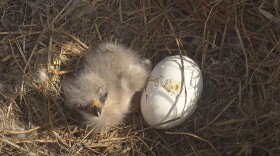A new plan to manage the Florida Keys National Marine Sanctuary would add almost 1,000 square miles to the sanctuary.
The public has until Oct. 18 to comment on the Restoration Blueprint released Tuesday. It would increase the sanctuary 's s ize by more than 25%, from 3,803 to 4,795 square miles. The sanctuary currently includes water encompassing the Keys from North Key Largo to the Dry Tortugas. It was designated in 1990 to protect the Keys coral reef and associated ecosystems.
Sanctuary Superintendent Sarah Fangman acknowledged a lot of the problems facing coral reefs are outside of local control. Those include stony coral tissue loss disease and catastrophic bleaching caused by global warming.
"Water quality, temperature stress, these are things that are bigger and harder to change," she said. "However we can do things locally , that can make our system more resilient, and we must."
The blueprint includes adding a new 259-square - mile area to the sanctuary to protect the deepwater corals at Pulley Ridge in the Gulf of Mexico, west of the Dry Tortugas.
It would also add new protections to special zones in 465 square miles on the marine sanctuary, where rules would vary from no entry to idle speed. And it would create new zones for coral restoration, protecting coral nursery areas and areas where corals are being transplanted back onto the reef.
The Keys reef is at a "tipping point," said Andy Bruckner, the sanctuary's research coordinator.
"Our reefs could be one of the first major U.S. ecosystems to collapse in this century," he said.
With a local economy that largely relies on the marine ecosystem through tourism and commercial fishing, Bruckner said it's incumbent on the local community to do everything it can to make the reef more resilient.
An earlier draft of the plan for the sanctuary drew fierce local opposition to proposals to limit fishing and entry in some areas.
Copyright 2022 WLRN 91.3 FM. To see more, visit WLRN 91.3 FM. 9(MDAyMTYyMTU5MDEyOTc4NzE4ODNmYWEwYQ004))








